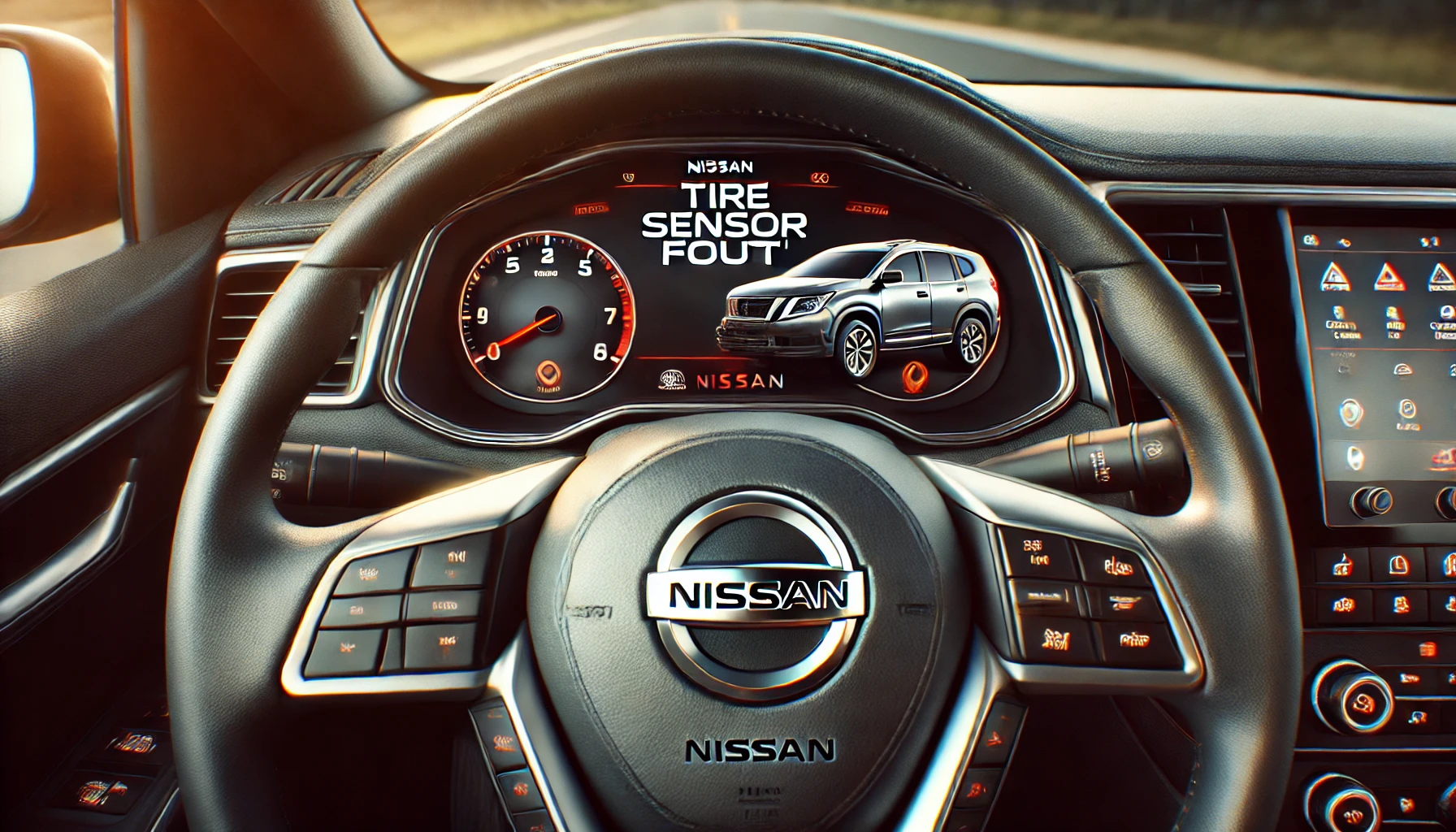
Nissan vehicles are equipped with a Tire Pressure Monitoring System (TPMS) to ensure the safety and performance of your tires. If you see a Tire Sensor Fault warning on the dashboard, it means there’s an issue with the system. Fortunately, resolving a tire sensor fault is often straightforward. In this article, we’ll cover the common causes of a tire sensor fault in Nissan vehicles and the steps to fix it.
Common Causes of Tire Sensor Fault in Nissan Vehicles
Several factors can trigger a Tire Sensor Fault in Nissan vehicles:
- Low Tire Pressure: The most common cause of a tire sensor fault is low tire pressure. The TPMS is designed to alert you when the pressure in one or more tires falls below the recommended level, which can lead to a fault warning.
- Damaged or Faulty Sensors: Tire sensors in Nissan vehicles can become damaged over time, especially during tire changes or while driving on rough terrain. A faulty sensor may send inaccurate data, causing a fault.
- Weak Sensor Battery: The TPMS sensors in Nissan vehicles are powered by batteries that typically last several years. If the battery is weak or dead, it can trigger a sensor fault.
- Interference or Software Glitches: Sometimes, external interference or a software glitch in the vehicle’s TPMS can lead to a false fault warning.
- Recent Tire Service: If your tires were recently rotated, replaced, or serviced, the sensors may not have been properly recalibrated, resulting in a fault.
Steps to Fix Tire Sensor Fault in Nissan Vehicles
If you see a Tire Sensor Fault warning in your Nissan, follow these steps to resolve the issue:
1. Check Tire Pressure Manually
The first step is to manually check the tire pressure in all four tires using a tire pressure gauge. You can find the recommended tire pressure for your Nissan in the owner’s manual or on a sticker inside the driver’s door.
- Inflate any under-inflated tires to the recommended pressure.
- After adjusting the tire pressure, drive the vehicle for a few miles. The TPMS system should recalibrate, and the fault warning should disappear.
2. Reset the TPMS System
If adjusting the tire pressure doesn’t resolve the issue, you may need to reset the TPMS system. Here’s how you can reset the system in most Nissan models:
- Turn the ignition to the On position without starting the engine.
- Use the controls on the dashboard or steering wheel to navigate to Settings or Vehicle Settings.
- Find the TPMS Reset option and select it.
- Drive your Nissan at a steady speed (above 20 mph) for about 10-15 minutes to allow the system to recalibrate.
If the reset is successful, the Tire Sensor Fault message should disappear.
3. Inspect the Tire Sensors for Damage
If resetting the TPMS doesn’t fix the problem, it’s possible that one or more of the tire sensors are damaged. The sensors are located inside the tire, attached to the valve stem, and can be damaged during tire changes or while driving over rough surfaces.
Inspect the valve stems for any visible damage. If a sensor is damaged, it will need to be replaced. A Nissan dealership or a certified mechanic can replace the faulty sensor and ensure that the system is properly recalibrated.
4. Replace the Sensor Battery
The sensors in your Nissan’s tires are powered by long-lasting batteries, but if a battery becomes weak or dies, the sensor will stop working, triggering a fault warning. Unfortunately, these batteries cannot be replaced individually, so the entire sensor will need to be replaced.
You can visit a Nissan service center or a qualified mechanic to have the sensor replaced and recalibrated with the TPMS system.
5. Perform a Software Update
In some cases, a Tire Sensor Fault can be caused by a software issue in your Nissan’s onboard system. Nissan periodically releases software updates to fix bugs and improve vehicle performance, including the TPMS.
Check if your vehicle has any pending software updates by visiting your Nissan dealership or checking through the NissanConnect system. Installing the latest software update might resolve the issue.
Preventing Future Tire Sensor Faults
- Regular Tire Pressure Checks: Make it a habit to check your tire pressure once a month, especially during temperature changes, to prevent false TPMS warnings.
- Handle Sensors with Care: When having your tires changed or rotated, ensure the technician is aware of the tire sensors and handles them with care to avoid damaging them.
- Routine Maintenance: Include TPMS sensor inspections during your vehicle’s regular maintenance to ensure the sensors are functioning properly and their batteries are still strong.
- Keep Software Updated: Always keep your Nissan’s software updated to prevent potential system glitches that could affect the TPMS.
Conclusion
A Tire Sensor Fault in your Nissan can be frustrating, but it’s often a minor issue that can be easily fixed. By checking your tire pressure, resetting the TPMS, and inspecting the sensors for damage, you can resolve the issue quickly. If the problem persists, visit a Nissan-certified service center to have the sensors replaced or update the vehicle’s software. Regular maintenance and attention to your tire sensors will help ensure your Nissan continues to operate safely and efficiently.
